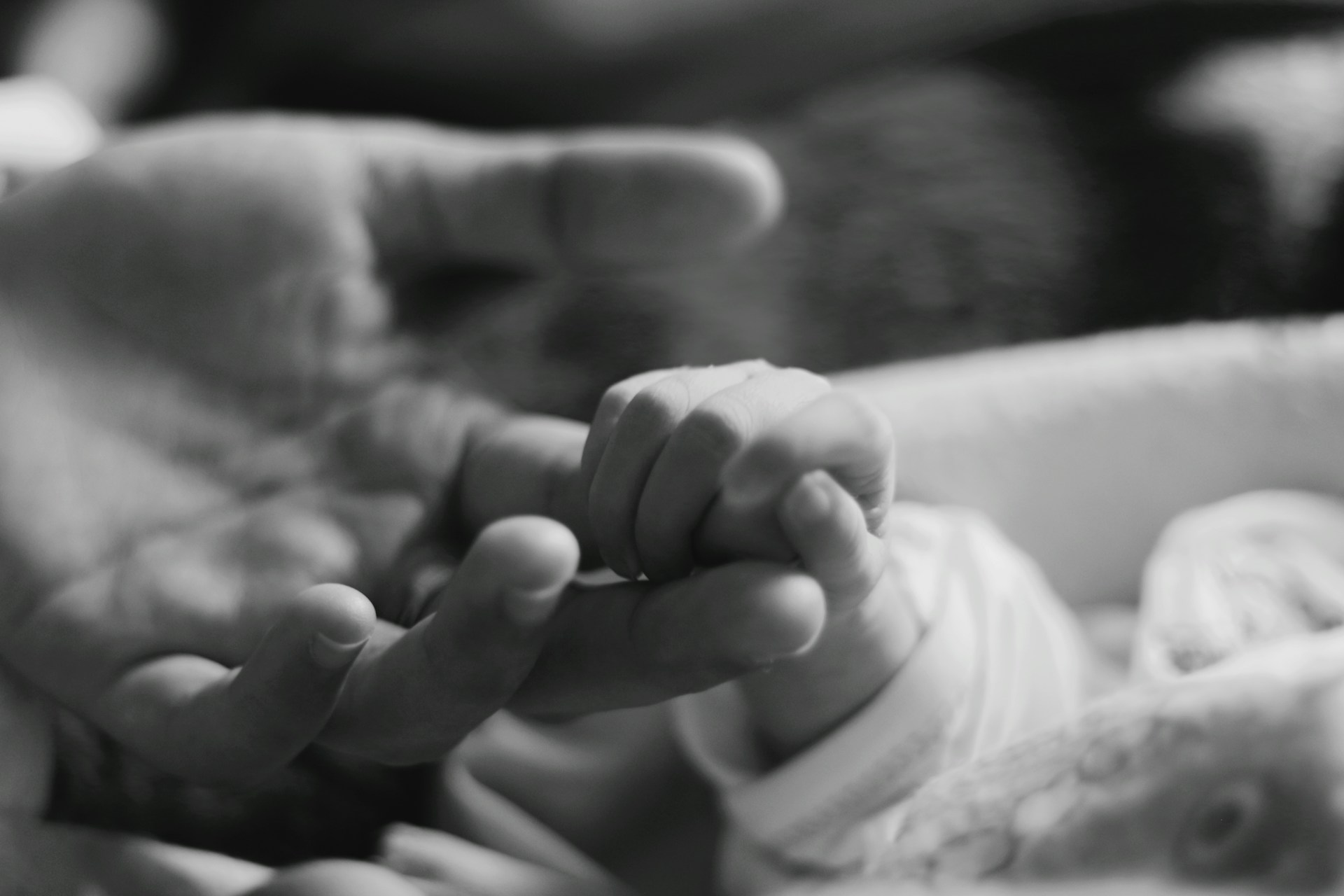Post-Traumatic Stress Disorder (PTSD) is a mental health condition that comes as a result of an extremely stressful or terrifying event. One does not have to have been directly affected by the event to experience PTSD. A person could have been an onlooker or a witness to the traumatic event and still experience PTSD. PTSD can also come from a slower exposure to something that is disturbing such as the daily bullying by family members, co-workers, or schoolmates.
 To be clear, not everyone who experiences traumatic events will end up with PTSD. Two people may go through the same event such as a car accident and one can easily recover and go on with their life while the other suffers from symptoms of PTSD for months and even longer after the accident.
To be clear, not everyone who experiences traumatic events will end up with PTSD. Two people may go through the same event such as a car accident and one can easily recover and go on with their life while the other suffers from symptoms of PTSD for months and even longer after the accident.
Someone who suspects they have PTSD can look for symptoms that have worsened following the event, symptoms that have gone on for months or years, or symptoms that affect daily functioning.
Some common ways people experience Post Traumatic Stress Disorder is from experiencing or witnessing events such as:
- Natural disasters.
- Serious accidents (vehicle, on the job, or otherwise).
- Physical or sexual assault or abuse.
- Military combat.
- Abusive relationships.
- Being threatened with a weapon.
- Diagnosis of a terminal illness.
- Death of a loved one.
While Post Traumatic Stress Disorder can affect people differently, there are common symptoms that can be experienced by people following traumatic events. Some of the more common symptoms can be grouped as follows.
Intrusive Memories, Thoughts, or Emotions
Intrusive Memories
People with PTSD may have intense, disturbing thoughts and feelings related to their experience, which can make it difficult to lead a normal life. These may include re-experiencing symptoms and intrusive thoughts through:
- Re-experiencing the traumatic event as if it is happening all over again.
- Disturbing dreams that may be replays of the incident or other extenuating circumstances around the event.
Intrusive thoughts
These are unwanted memories or thoughts related to the trauma. A person may be deeply engrossed in work or another activity and then a thought related to the trauma seemingly comes from nowhere.
Emotional Distress
Re-experiencing the traumatic event in our minds continually causes emotional distress leaving us incapable of fulfilling our daily lives.
Avoidance
Avoidance is a common way to deal with trauma. We think we won’t be reminded of it if we can avoid the person(s), places, or activities where the trauma happened. We also avoid any conversation that might bring up the event.
 Emotional numbness is a natural byproduct of avoidance. One dissociates from the event and anything or anyone attached to it. This is the PTSD sufferer’s way of blocking any emotional tie to the event. Difficulty recalling aspects of the trauma is related to emotional numbness as the person has gone even further in their mind and completely blocked aspects of the trauma as a defense mechanism.
Emotional numbness is a natural byproduct of avoidance. One dissociates from the event and anything or anyone attached to it. This is the PTSD sufferer’s way of blocking any emotional tie to the event. Difficulty recalling aspects of the trauma is related to emotional numbness as the person has gone even further in their mind and completely blocked aspects of the trauma as a defense mechanism.
Negative Changes in Mood and Thinking
After one experiences a traumatic event, it is common for changes to occur in the sufferer’s mood and thinking. This could look like:
- Feelings of detachment or estrangement from others.
- Negative thoughts about self, people or the world in general.
- Persistent negative emotions, such as fear, shame, guilt, blame or anger.
- Difficulty trusting others.
- Memory problems, such as trouble remembering important parts of the trauma.
- Feelings of hopelessness about the future.
- Disinterest in normal activities.
- Feeling emotionally numb and depressed.
Arousal and Reactivity Symptoms
Another symptom a person might notice is hyperarousal or becoming hypervigilant. Because they are now continually on alert for danger, changes in how they physically and emotionally react to what is considered “normal” changes. Some common hyperarousal symptoms are:
- Severe anxiety.
- Physical symptoms such as those associated with anxiety attacks, sweating, rapid breathing, fast heartbeat, even trembling.
- Always on guard looking for danger.
- Irritability or angry outbursts.
- Reckless or self-destructive behavior.
- Difficulty sleeping (insomnia).
- Difficulty concentrating.
- Being easily startled or feeling “on edge.”
The good news is there are solutions and interventions that can help those with PTSD. No intervention is a cure-all for everyone. It will take intention to find what works best for you. Here are some common solutions that have worked for others suffering from PTSD.
Therapy
Cognitive Behavioral Therapy (CBT)
CBT is a proven therapy for PTSD which helps individuals confront the memories and thoughts of the traumatic event(s) and help to reframe those memories.
Eye Movement Desensitization and Reprocessing (EMDR)
EMDR uses the brain’s natural ability to process the trauma in the same manner the brain processes other events which is through bi-lateral stimulation. It has been proven to be a highly effective method for dealing with PTSD having been studied and researched extensively.
Trauma-Focused Cognitive Behavioral Therapy (TF-CBT)
This is a form of Cognitive Behavioral Therapy (CBT) that is often used with children and adolescents. The principles are effective for their caregivers as well. This therapy focuses on re-framing the thoughts associated with the trauma by addressing distorted or upsetting beliefs. They learn new skills in how to cope with daily life stressors.
Group Therapy
There is much benefit in connecting with others who have experienced similar traumas. Many times we feel alone in what we have endured but knowing that others have endured something similar and have found ways to cope and overcome it is therapeutic.
Medication
There are times when PTSD symptoms are overwhelming, and the one experiencing PTSD will need to seek out a medical professional to address these physical and emotional symptoms. Together with a healthcare professional, they will be able to come up with a plan to help the sufferer cope with their symptoms. Many times medication can be a temporary help following the traumatic event.
Self-Help
There are various interventions one can employ to help manage the symptoms of PTSD on their own. The following are good practices for dealing with all of life’s stressors including trauma.
Mindfulness and meditation
Using techniques such as deep breathing, meditation, and yoga can help reduce stress and increase emotional regulation. Practicing mindfulness throughout the day is a powerful exercise to keep one focused on the reality of the moment. This allows one to remain in the here-and-now when anxious thoughts begin to rise.
Physical exercise
Regular physical activity has been proven to improve mood and help alleviate symptoms of anxiety and depression. Hormones such as endorphins are released during exercise which help to give one a sense of well-being.
Sleep
Maintaining a regular sleep schedule can help combat sleep disturbances often seen in PTSD. The brain needs time to rest, recover, and heal and the best practice for this is quality sleep.
Grounding techniques
Grounding techniques are akin to mindfulness. However, the difference lies in using particular strategies such as noticing physical sensations to stay present. One might notice how their body feels during times of intense emotions. They might focus on the physical sensations of touch, sound, or smell to keep them “grounded” in the moment.
Healthy nutrition
Paying attention to the things you consume by implementing a healthier, balanced diet rich in whole foods, vegetables, fruits, and lean proteins can support mental health and aid in reducing PTSD symptoms.
Avoiding substance abuse
Alcohol and drugs may appear to help you deal with the pain from PTSD. However, in the long run, they make matters worse. It can also interfere with any healthy interventions you may be employing.
Support Networks
 Humans by nature are social creatures. We need the support of others in our lives for daily living and even more so when we are dealing with something traumatic. Many find support through friends, family, or a support group. People have found a great sense of safety and connection when relying on others for help.
Humans by nature are social creatures. We need the support of others in our lives for daily living and even more so when we are dealing with something traumatic. Many find support through friends, family, or a support group. People have found a great sense of safety and connection when relying on others for help.
Another form of support can be found with people who have gone through the same experience you have. Peer support groups can provide comfort as you talk to others who have shared similar experiences. Examples of peer support groups would be veterans’ organizations, victims of domestic violence, cancer survivor groups, or grief and loss groups.
Alternative Therapies
People who have experienced PTSD have also benefited from other therapeutic interventions which include art therapy, music therapy, and Trauma Informed Yoga therapy.
Each of these allows for creative expression through a specific medium. These have proven to be powerful tools in allowing the sufferer to express more freely their experience all the while processing their trauma.
Acupuncture and aromatherapy have also proven helpful for some in helping to manage the symptoms of PTSD. People have found them helpful in relieving stress, insomnia, and pain management.
Next Steps to Address Post Traumatic Stress Disorder
 Dealing with PTSD is a process. This progress is not linear. There may be days when you feel much better and more like yourself and then the next day you are back down again. Be patient with yourself. Find small, achievable goals that will help you return to normalcy quickly. You will feel a sense of control as you begin to take charge of your life once again.
Dealing with PTSD is a process. This progress is not linear. There may be days when you feel much better and more like yourself and then the next day you are back down again. Be patient with yourself. Find small, achievable goals that will help you return to normalcy quickly. You will feel a sense of control as you begin to take charge of your life once again.
If you or someone you know is struggling with PTSD, it’s important to seek professional help. PTSD is treatable, and with the right combination of therapy, medication, and lifestyle adjustments, many people can experience significant improvement and regain control of their lives. You can reach out to me to schedule an appointment and together we will work on a plan to help you on your healing journey.
“Distressed”, Courtesy of Mart Production, Pexels.com, CC0 License; “Mountaintop Yoga”, Courtesy of Yannic Läderach, Unsplash.com, CC0 License; “Group Counseling”, Courtesy of Getty Images, Unsplash.com, Unsplash+ License; “Freedom”, Courtesy of Getty Images, Unsplash.com, Unsplash+ License
-
Michele Shaw: Author
Our God has tender-hearted compassion for those who are hurting, grieving, and afflicted (Isaiah 61:1-4). Do you find yourself in one of those places currently? No matter your circumstance, you can know with certainty that God wants you to be free fr...
-
Kate Motaung: Curator
Kate Motaung is the Senior Writer, Editor, and Content Manager for a multi-state company. She is the author of several books including Letters to Grief, 101 Prayers for Comfort in Difficult Times, and A Place to Land: A Story of Longing and Belonging...
DISCLAIMER: THIS ARTICLE DOES NOT PROVIDE MEDICAL ADVICE
Articles are intended for informational purposes only and do not constitute medical advice; the content is not intended to be a substitute for professional medical advice, diagnosis, or treatment. All opinions expressed by authors and quoted sources are their own and do not necessarily reflect the opinions of the editors, publishers or editorial boards of Stone Oak Christian Counseling. This website does not recommend or endorse any specific tests, physicians, products, procedures, opinions, or other information that may be mentioned on the Site. Reliance on any information provided by this website is solely at your own risk.






